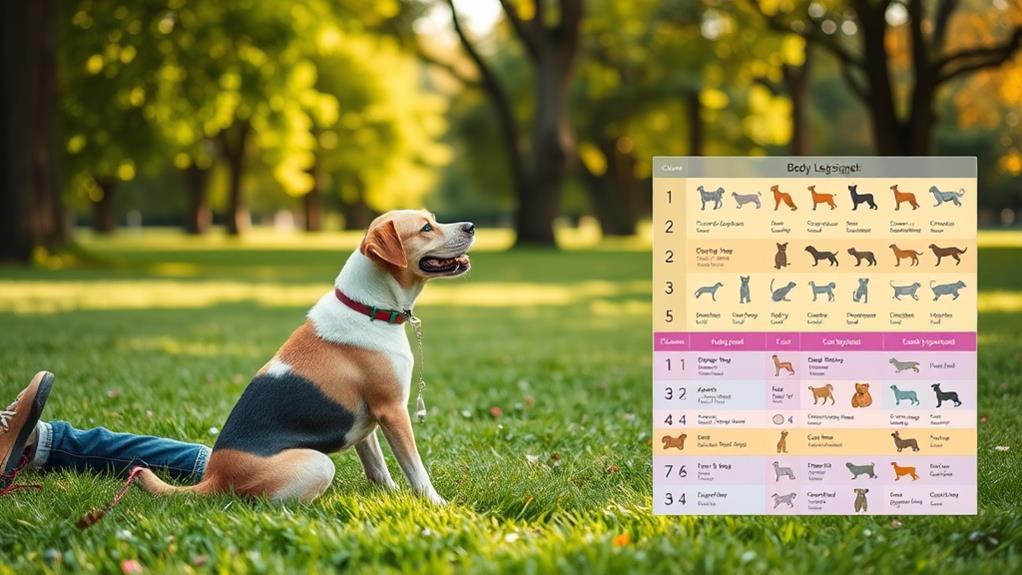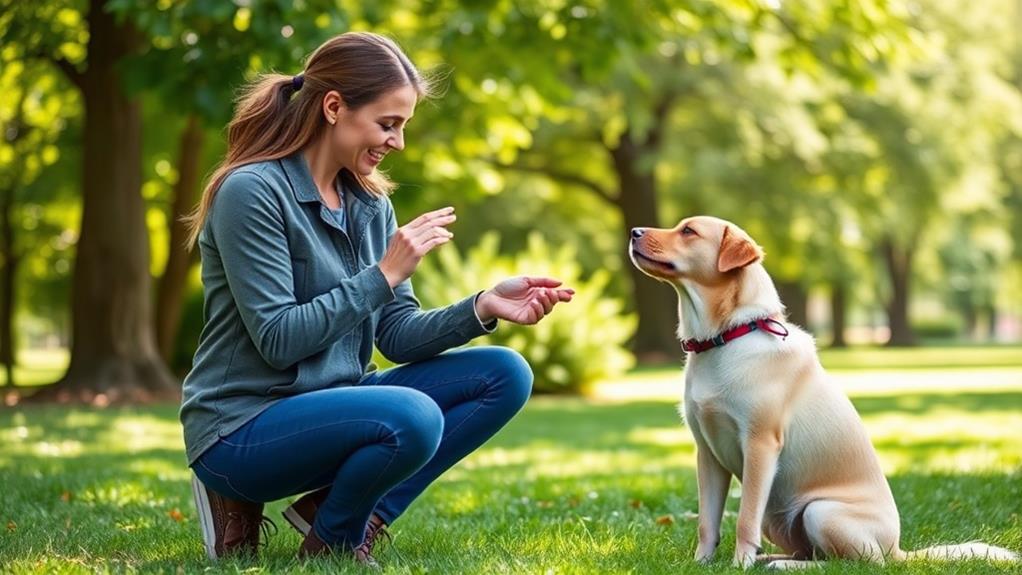To train your dog effectively, focus on three essential tips. First, understand your dog's behavior by observing their body language and reactions to different situations. This helps you address any root causes of undesirable actions. Next, use positive reinforcement; reward good behaviors immediately with treats, toys, or praise to create a happy learning environment. Finally, consistency is vital. Use the same commands and maintain a steady tone to help your dog grasp what you expect. By following these tips, you can create a strong bond and a well-trained companion. There's plenty more to explore about successful training strategies!
Understand Your Dog's Behavior

Understanding your dog's behavior is crucial for effective training. Every dog has its own personality, instincts, and ways of communicating. By paying attention to your dog's body language and vocalizations, you can gain valuable insights into what they're feeling. For instance, a wagging tail usually indicates excitement, while a tucked tail may suggest fear or anxiety.
Observe how your dog reacts in different situations. Does it get nervous around strangers? Does it jump excitedly when you grab a leash? Recognizing these patterns helps you anticipate your dog's needs and responses, allowing for a more tailored training approach.
Also, consider the context of your dog's behavior. Are they acting out due to boredom, lack of exercise, or anxiety? Addressing the root causes can greatly improve their behavior.
Additionally, keep in mind that dogs learn through association. If they associate a command with a particular action or situation, they'll understand better over time. By understanding your dog's behavior, you're not just training them; you're building a bond based on trust and communication. This foundation makes your training efforts more effective and enjoyable for both of you.
Use Positive Reinforcement

Positive reinforcement is a powerful tool in dog training that encourages good behavior through rewards. When your dog performs a desired action, like sitting or staying, rewarding them instantly with treats, praise, or affection reinforces that behavior. This method not only makes training enjoyable for your dog but also strengthens your bond.
Start by identifying what motivates your dog the most. It could be tasty treats, favorite toys, or even verbal praise. It's important to be consistent with your rewards, as this helps your dog understand which behaviors are acceptable. When your dog responds correctly, reward them immediately; timing is paramount. If you wait too long, they mightn't connect the action with the reward.
Avoid using punishment, as it can lead to fear and anxiety, making training much harder. Instead, focus on rewarding the behaviors you want to see more of. If your dog makes a mistake, redirect them gently towards the right behavior and reward them when they comply. By using positive reinforcement, you'll create a happy, motivated learner keen to please you. This approach sets the stage for effective communication and a harmonious relationship with your furry friend.
Consistency Is Key

How can you expect your dog to learn if you're not consistent? Consistency is crucial in dog training because it helps your furry friend understand what's expected. When you use the same commands, rewards, and corrections every time, your dog quickly grasps the rules. If you're inconsistent, your dog may get confused, leading to frustration for both of you.
To help you stay consistent, consider the following:
| Command/Behavior | Consistent Response |
|---|---|
| Sit | Always reward with a treat |
| Stay | Use the same hand signal |
| Come | Call using the same tone |
| No Barking | Use a firm voice every time |
| Leash Training | Always correct gently |
Frequently Asked Questions
How Long Should Training Sessions Last for My Dog?
Training sessions should last about 5 to 15 minutes, depending on your dog's age and attention span. Short, focused sessions keep your dog engaged and help reinforce learning without overwhelming them. Adjust as needed for best results.
What Age Is Best to Start Training My Puppy?
You should start training your puppy as soon as you bring them home, typically around eight weeks old. Early training builds good habits, making your pup a well-behaved companion, like a trusty sidekick in a buddy movie.
Can I Train Multiple Dogs at Once?
Yes, you can train multiple dogs at once, but it's pivotal to manage their attention. Focus on one command at a time, rewarding each dog individually to maintain their interest and prevent distractions.
How Can I Handle Distractions During Training?
Training's like juggling; you need focus. To handle distractions, keep your environment calm. Use treats to regain attention, practice in less stimulating areas first, and gradually introduce distractions as your dog becomes more comfortable.
What Should I Do if My Dog Loses Interest?
If your dog loses interest, switch up the training routine. Introduce new commands, use high-value treats, or shorten sessions. Keep it fun and engaging, and always reward their efforts to rekindle their enthusiasm.
Conclusion
In the journey of dog training, remember that patience and understanding pave the way to success. By grasping your dog's behavior, using positive reinforcement, and staying consistent, you'll build a bond that transcends mere commands. Isn't it amazing how a little effort can transform your relationship? Embrace these tips, and watch as your furry friend thrives under your guidance. After all, every wagging tail tells a story of trust and connection waiting to unfold.


